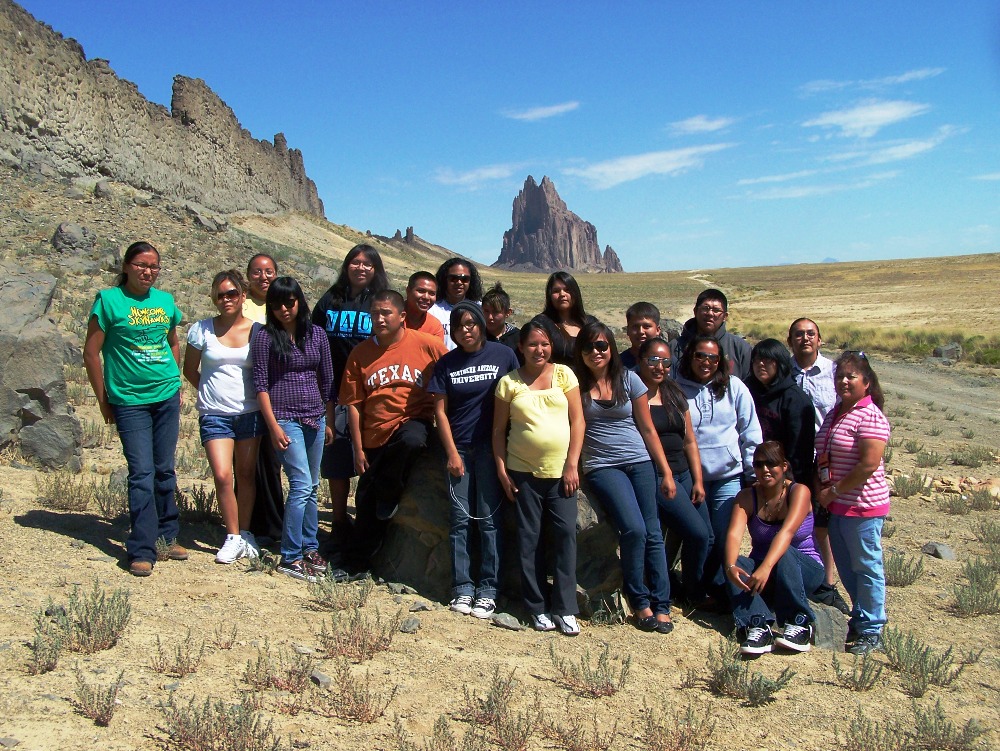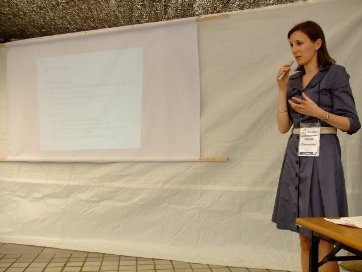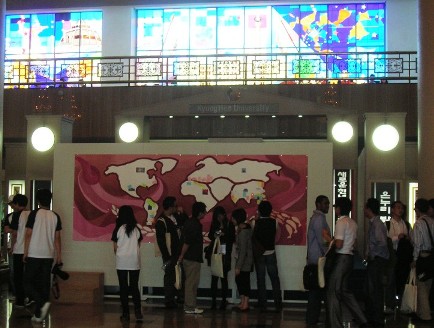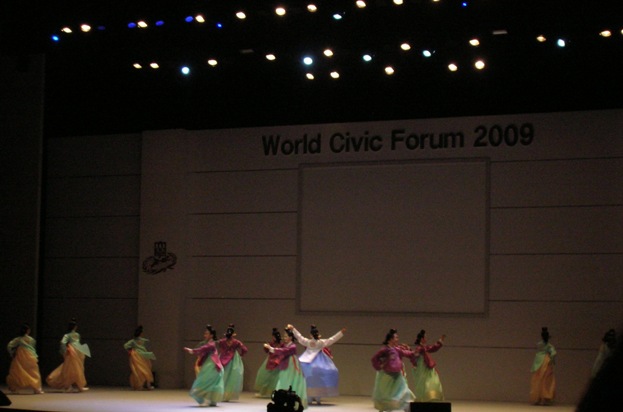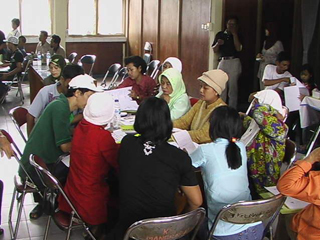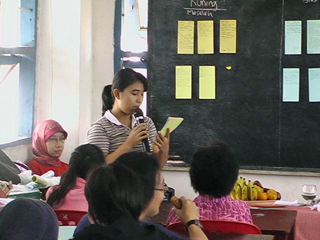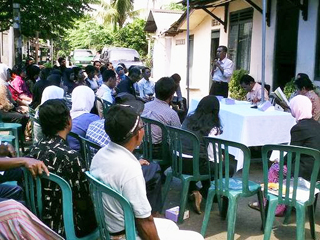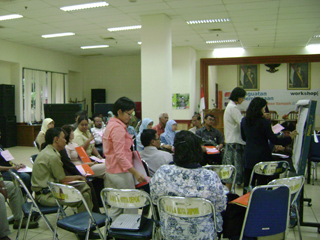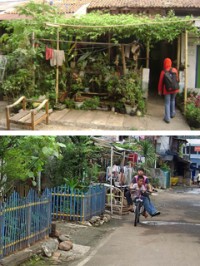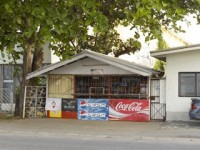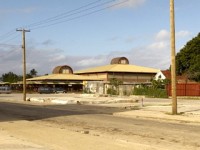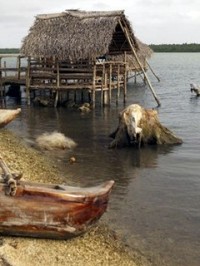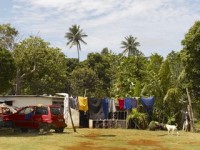Early years of Japanese immigration to Brazil
The history of Japanese immigration to Brazil dates from 1908, when the first steamship arrived in Santos carrying the first immigrants to an unknown tropical land located on the other side of the globe. At that time, there was a shortage of labour force in coffee plantations in Brazil, and Japan decided to establish an emigration policy to cope with an increasing population and lack of natural resources that could feed their citizens.
Also, the limitation imposed by an amendment to the immigration law in the United States caused the impossibility of Japanese people to immigrate to that country, inciting the search for other places in the world where Japanese could temporarily work and return with enough savings to secure a better life.
These factors contributed to the immigration flow to the American continent, specifically to countries such as Mexico, Peru, Bolivia, Paraguay, Argentina and Brazil. However, life outside Japan was extremely arduous, due to somewhat precarious work conditions in the beginning of the last century, foreign language, different food and habits, among others.
Even though Japanese people had emigrated temporarily, debts related to the long journey from Japan to South America, as well as living expenses, made it hard for them to save enough to return to their original country. Also, the World War II and consequently Japan’s defeat were critical factors that made them settle and change their status from temporary to permanent residents.
One hundred years had passed and in the verge of celebrating this occasion, around the 1990s, the situation was reversed and Japanese descendants from South America started taking the opposite route to work temporarily in Japan, one of the greatest economies in the world, at that time suffering labour shortage and offering better conditions and salaries, and therefore, perspectives of life.
Japanese descendants return to Japan
In 1990, Japan enforced an amendment to the Immigration Control and Refugee Recognition Act to include a long-term resident visa for Japanese descendants who wished to come to Japan to visit relatives and spend time in their country of ethnical origin.
The long-term visa opened a possibility for Japanese descendants to engage in any type of activity, including non-skilled jobs, since there was no restriction in terms of what kind of activities they could pursue during their stay in Japan.
At that time, there was a shortage of labour force in some industrial sectors and even though the preference for hiring same ethnic people was never openly discussed in public, there was a trend to accept Japanese descendants who would adapt and interact more easily with other Japanese colleagues.
Combining the need of labour force in Japan and economic crisis in Brazil and the possibility of long-term visas to stay in Japan, a large number of Japanese descendants decided to try their luck in the land of their ancestors. At the peak of this diaspora, in 2007, the Japanese Ministry of Justice registered 316,967 Brazilian residents (included in this figure are Japanese-Brazilians, non-descendant spouses and children until the third and fourth generations).
With the recent economic crisis that affected many countries worldwide, causing huge cuts in expenditure and thus unemployment, and also the release of funds from the Japanese government to support the return of migrant workers who did not have the means to purchase a return air ticket, the number of Brazilians residing in the country dropped to 267,456, according to the latest available statistic from the Japanese Ministry of Justice (December 2009).
Being the third largest group of foreigners, most of them unable to speak the language and having different habits and perspectives of life and culture, it was inevitable that problems would occur.
It is worth mentioning that the first two groups of foreigners living in Japan are of Chinese and Koreans, respectively, most of them already integrated in Japanese society, due to the easiness of learning and communicating in Japanese in the case of Chinese and of being born and raised in Japan, the case for many Koreans. Therefore, cultural shocks, language problems and others are less visible within these groups.
In the beginning of this migration wave, like the Japanese who went to Brazil in the last century, Japanese-Brazilians planned to spend a couple of years in Japan, save enough money to go back and open small businesses, buy real estate, finance their children or their own studies and so on.
Both strategies and goals were quite immediate and the plan was to return to Brazil as soon as possible. However, the lack of experience as business managers resulting in failure of entrepreneurship attempts, or lack of knowledge as to where to invest and other unexpected factors contributed to make Japanese-Brazilians to either return to Japan or extend their stay.
Settling trends: from temporary residents to immigrants
After some years, the pattern of men and women migrating by themselves, leaving their families behind, changed to include spouses and children. Soon later, issues regarding Brazilian children education, bullying stories, adaptation problems and others started to circulate and even though these are far from being completely solved, certain stability was achieved.
Asked whether their stay was still temporary after long years in Japan, Brazilians were categorical to reply that they would return to Brazil. However, as their children started attending Japanese schools, some following until university, opened small businesses directed to the Brazilian community, to mention few developments, the will to return started fading and the discourse changed to include plans to go back to Brazil after retirement.
Some signs of this trend to stay can be seen in the increase of permanent visa and naturalization requests, as well as long-term loans to buy real estate. Because of these, scholars and media have been referring to this group of people not anymore as dekasegi, which originally alludes to people who leave their home temporarily to work somewhere else, but as immigrants.
This shift in the provisional status of temporary workers to immigrants needs to be accompanied by new analysis and possible change of policy towards this group of foreigners.
Long-term vision and strategies are necessary to address current but future problems as well. In this sense, the signature of the first bilateral agreement Japan signed with an emerging country on social security issues demonstrates that there is a concern that involves problematic issues with future impact. Through this agreement, Brazilian and Japanese workers alike may contribute to the social security in the country they are currently residing and later count the years of contribution in order to obtain pension and other benefits.
On the other hand, the Japanese government has also been intensifying the assistance to foreign workers through its Public Employment Security Offices and Hello Work agencies, by posting announcements for jobs, one of their primary roles, but also offering language courses and training programmes, in an attempt to facilitate employment.
Despite of the economic crisis, these measures that aim to absorb this workforce are extremely important, considering that Japan’s population growth rate is already negative and it is predicted that it is one of the countries that will face severe shortage of labour force in the near future.
Some legal problems and possible solutions
Although some issues are being taken care of, there are other matters that urgently need attention and that will most certainly have repercussions for the future. One of them is the judicial cooperation between the two countries in civil and criminal matters, an issue that has been in the negotiation agenda for quite some time.
It is worth emphasising that the two areas are equally important, because although criminal matters receive a lot of media attention, particularly in Japan, related issues in both areas affect real people, children and families in Japan and in Brazil.
During the past years, victims’ families of the crimes committed by Brazilians have been exerting pressure on the Japanese government to negotiate an extradition agreement with Brazil. This is due to the elusion of criminal offenders to that country, where, like others including Japan, extradition of nationals is prohibited, unless special circumstances occur (in the case of Brazil, if the crime was committed before naturalization; and in the case of Japan, if there is an extradition agreement that establishes otherwise).
The only possibility thus left to take offenders to trial is making a formal request to the Brazilian government to prosecute them in Brazil by providing evidence and all other necessary materials.
Notwithstanding the inexistence of a specific criminal cooperation agreement, Brazilian authorities have been cooperating with Japanese authorities so far, but differences in both countries’ legislations and penalties are causing some distress. For example, death caused by traffic accident in Japan is punished with prison that may range from 7 to 20 years depending on aggravating circumstances, while in Brazil, if it is an involuntary homicide, the penalty can vary between 2 to 4 years, but if there is aggravating circumstances, it can be increased up until 6 years, together with the suspension or prohibition of obtaining a driver’s license. For Japanese people it is inconceivable that Brazilian law seems to be lenient in these cases. However, unlike in Japan, where there are special facilities for those who committed this type of crime, in Brazil there is nothing similar.
The way in which a society defines and punishes crimes may differ considerably according to their own interpretation and perspectives of life, culture, values that should be protected or discouraged and so on. However, albeit crimes classification and penalties might be different, it should not be an obstacle for both countries to find a way to cooperate with each other and pursue the task of punishing crimes.
A clear need of an agreement that addresses judicial cooperation is apparent, not only to speed up the process, in some cases delayed due to the lack of knowledge concerning the appropriate procedures, but most importantly to shape the cooperation according to specific requirements, in suitable and acceptable ways for both Brazil and Japan.
Regarding cooperation in civil matters, there is a simple agreement based on an exchange of notes in 1940. At that time, there were many Japanese residing in Brazil due to the immigration flow that started in 1908 and evidently, there was a need of a cooperation agreement that could assist Japanese authorities to reach their citizens in Brazil, mostly in case of inheritances at that time.
More than half a century later, a large number of Brazilians is now residing in Japan and the same problem surfaces. The bilateral agreement of 1940 does not address anymore all the issues concerning civil cooperation, although the current exchanges are being based on that document. Procedural and substantial differences in both countries’ legislations cause some frictions that could be mitigated with a deep understanding of social, cultural, historical and institutional legacies.
Notwithstanding, ongoing negotiations have been occurring for some years and certainly there are many aspects that are yet to be distilled, but as mentioned, government officials must keep a clear focus and objective in their minds: legal issues have a major impact in someone’s life and one that may affect an entire existence, change people’s and especially children’s future.
In the case of civil cooperation, spouses and children who live either in Japan or in Brazil are in need of alimony for survival, former spouses are trying to obtain divorce in order to marry again, sometimes with a new partner with whom they already live a de facto family situation, and many others.
Therefore, a concrete effort towards overcoming differences and pre-conceived notions shall be made to positively influence the settlement of these legal issues, a matter of concern for both governments, but of extreme importance for their citizens.
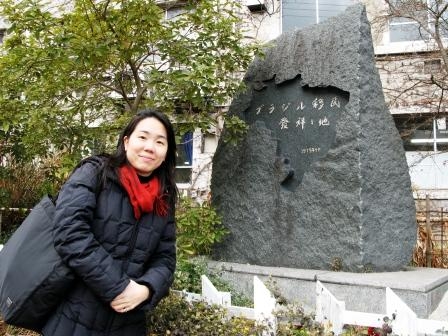
Aurea Tanaka in front of the former Kobe Emigration Center, where Japanese who were about to emigrate to Brazil spent a couple of days before boarding in early 1900s.
It is a matter of creating priorities and making difficult choices as regards what rights to protect. If the fear is a transformation of legal consciousness and eventual social unrest, the solution is not to leave these matters unresolved but be proactive and anticipate the establishment of rules that will address the problems in a systematic and comprehensive way, nurturing a legal stability that will only benefit all parties involved. In this sense, it is important to offer a clear sign that both governments are concerned and upholding their citizens’ interests by taking the necessary measures to tackle problems that affect their lives.
If the temporary migrants of the past are becoming the immigrants of the future, it is also time to replace the short-term vision when thinking about immediate problems and searching for solutions, look into the future and the challenging achievements that still need to be pursued.
The history of the Japanese immigration to Brazil has completed 100 years in 2008. During the celebrations, it was mentioned that the most important aspect of both countries’ relations was the human bond that brought Japanese to Brazil and Brazilians to Japan. It is unrealistic and unlikely that this tie will break during the next 100 years and that shall gives us all one more stimulus to continue collaborating and joining efforts in accommodating both countries’ specific features and interests when looking for common problem’s solutions.
The opinions expressed in the articles are those of the respective authors and do not necessary represent the views of the Tokyo Foundation.
Aurea Christine Tanaka
Aurea Christine Tanaka was a Sylff Fellow in 2004 while finishing her Ph.D. dissertation submitted to the Department of International Law of the Faculty of Law of the University of São Paulo, Brazil. For her Ph.D. she addressed issues related to International Family Law, focusing on divorce cases involving Brazilians living in Japan. Attorney-at-law, she has advised Brazilian and Japanese in legal problems involving both countries’ legal systems and since 2008 has been working for the Education for Sustainable Development Programme at the United Nations University Institute of Advanced Studies. She is currently interested in research involving the correlation between law and development, especially the impact and influence of legal instruments in changing behaviour and guiding sustainable practices, as well as partnerships in education for sustainable development. E-mail: tanaka[at]ias.unu.edu. The author would like to express her gratitude to Professor Masato Ninomiya of the University of São Paulo and Mr. Isamu Maruyama from the Tokyo Foundation, for their valuable comments.
 Two days before that I was in Tahrir square, just before it was forcefully cleared out by the military. Where Egyptians from all walks of life had gathered to express their demands peacefully. So many events and so many emotions. The past six months have passed like a whirlwind. Everyone keeps asking us where do we go from here. What it’s like to be here. What things on the ground are like. What Egyptians are feeling. Continue reading
Two days before that I was in Tahrir square, just before it was forcefully cleared out by the military. Where Egyptians from all walks of life had gathered to express their demands peacefully. So many events and so many emotions. The past six months have passed like a whirlwind. Everyone keeps asking us where do we go from here. What it’s like to be here. What things on the ground are like. What Egyptians are feeling. Continue reading 






